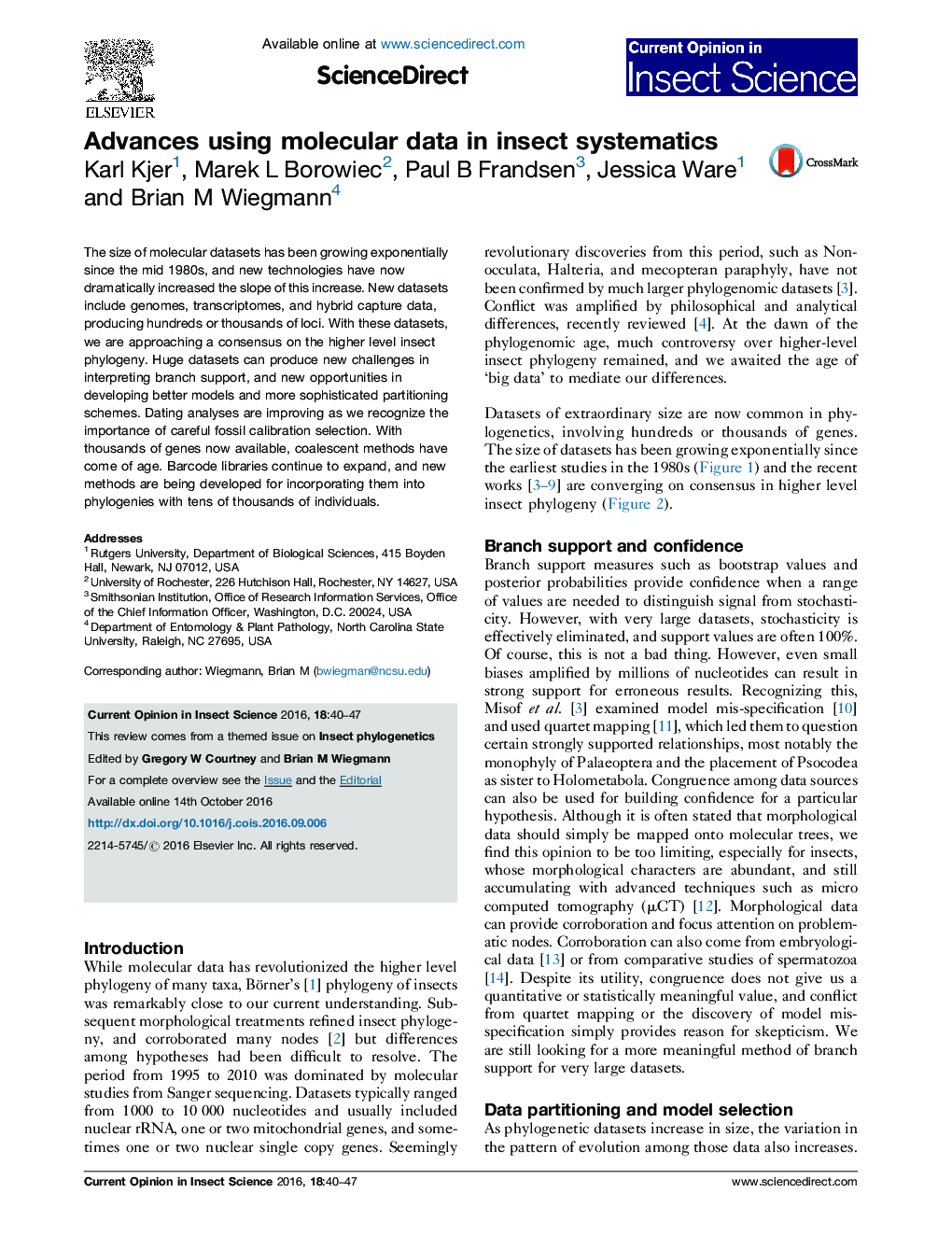| Article ID | Journal | Published Year | Pages | File Type |
|---|---|---|---|---|
| 6373983 | Current Opinion in Insect Science | 2016 | 8 Pages |
â¢Molecular datasets grew exponentially from 1985 to 2010.â¢New technology since 2010 accelerated the rate at which datasets increase in size.â¢Recent large datasets have resolved many previously intractable questions in insect phylogeny.â¢Methods in coalescence, dating, models, and partitioning are improving with large datasets.
The size of molecular datasets has been growing exponentially since the mid 1980s, and new technologies have now dramatically increased the slope of this increase. New datasets include genomes, transcriptomes, and hybrid capture data, producing hundreds or thousands of loci. With these datasets, we are approaching a consensus on the higher level insect phylogeny. Huge datasets can produce new challenges in interpreting branch support, and new opportunities in developing better models and more sophisticated partitioning schemes. Dating analyses are improving as we recognize the importance of careful fossil calibration selection. With thousands of genes now available, coalescent methods have come of age. Barcode libraries continue to expand, and new methods are being developed for incorporating them into phylogenies with tens of thousands of individuals.
